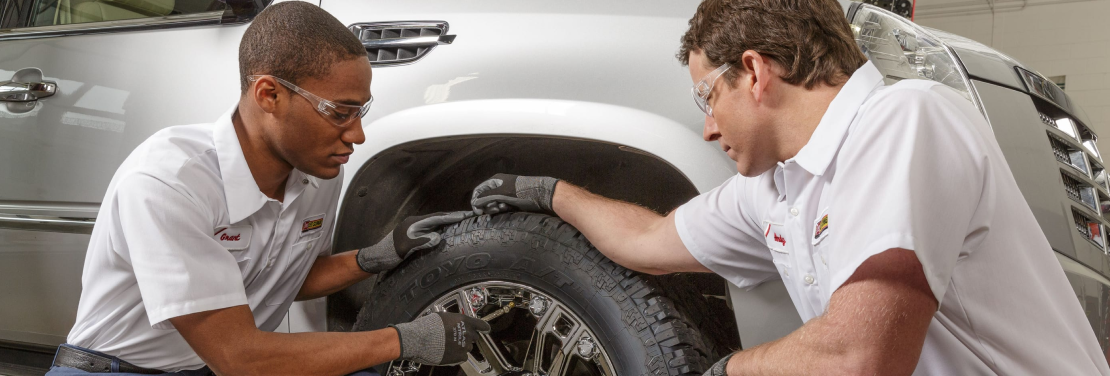Budget-friendly Discount Tires Morris IL: Unsurpassable Costs, Quality Guaranteed
Budget-friendly Discount Tires Morris IL: Unsurpassable Costs, Quality Guaranteed
Blog Article
Tire Solution: Recognizing Tire Stress Monitoring Systems
Comprehending Tire Pressure Surveillance Solutions (TPMS) is a critical aspect of maintaining ideal car efficiency and safety and security on the road. With developments in automotive innovation, TPMS has actually come to be a conventional feature in modern lorries, providing real-time information on tire pressure degrees.

Significance of TPMS
The relevance of Tire Pressure Surveillance Equipments (TPMS) exists in their capability to improve lorry safety and performance with real-time tracking of tire stress levels. Preserving the proper tire pressure is vital for making certain ideal handling, braking, and overall safety and security of a car. TPMS supplies chauffeurs with prompt comments on any type of underinflated or overinflated tires, allowing for prompt adjustments to be made.
Parts of TPMS
Making up various essential aspects, a Tire Stress Surveillance System (TPMS) works as an advanced safety function in modern-day vehicles. The main components of a TPMS include sensing units, a control component, and a caution indication. Sensing units are commonly located in the tire shutoff stem or affixed to the wheel assembly, where they measure tire stress and transfer data to the control module. If it finds significantly low stress in any of the tires, the control component procedures this information and triggers a warning. The warning indicator, usually a sign on the control panel, informs the vehicle driver to inspect the damaged tire or tires. Some advanced TPMS models likewise display the real tire pressure readings for each tire, providing drivers with real-time details to make sure optimum tire performance and security. By keeping an eye on tire pressure continuously, TPMS helps avoid crashes, minimizes tire wear, and boosts gas effectiveness, making it an essential component for car safety and security and performance.
Types of TPMS

On the other hand, indirect TPMS depends on the vehicle's wheel rate sensors to check tire stress. This system spots underinflation by contrasting the rotational rates of the wheels. Indirect TPMS is less costly than straight TPMS, as it uses existing sensing units within the lorry.
While straight TPMS supplies extra accurate readings, indirect TPMS is easier in design and commonly needs less maintenance. Both systems have their this content benefits and restrictions, and the choice in between them commonly depends upon aspects such as expense, car make, and personal preference. Comprehending the distinctions in between these two types of TPMS can help lorry proprietors make informed choices pertaining to tire maintenance and safety and security.
TPMS Maintenance Tips
Conduct routine checks on the tire stress degrees and contrast them with the TPMS analyses to ensure they are constant. Throughout tire turning or substitute, make sure that the TPMS components are handled meticulously to stop any possible damage. If the TPMS cautioning light illuminates on the dashboard, resolve the problem promptly by examining the tire pressures and the overall system for any type of faults.
Advantages of Correct Tire Stress
Keeping appropriate tire pressure, as stressed in TPMS Maintenance Tips, is important for enjoying the numerous benefits connected with optimal tire pressure degrees. One of the key advantages of keeping the appropriate tire pressure is improved fuel efficiency. When tires are properly inflated, there is much less rolling resistance, causing far better fuel economy. Furthermore, correct tire stress makes certain also tire wear, prolonging the life-span of the tires and advertising safer driving conditions. With the ideal tire pressure, vehicles likewise have better handling and traction, especially in unfavorable climate condition. This can enhance overall driving efficiency and security for the chauffeur and travelers. Moreover, preserving optimal tire browse this site pressure can add to a smoother and much more comfortable adventure by reducing vibrations and sound triggered by underinflated tires. In conclusion, the benefits of appropriate tire pressure surpass simply tire long life; they incorporate enhanced fuel effectiveness, improved safety, better vehicle performance, and general driving comfort.
Verdict
To conclude, understanding tire pressure tracking systems (TPMS) is important for keeping optimum tire stress and making sure car safety. By recognizing the relevance of TPMS, being acquainted with its elements, understanding the various see post kinds available, adhering to correct upkeep tips, and recognizing the benefits of maintaining proper tire pressure, vehicle drivers can improve their driving experience and lengthen the lifespan of their tires. Appropriate tire stress is key to efficient and risk-free automobile operation.

Report this page